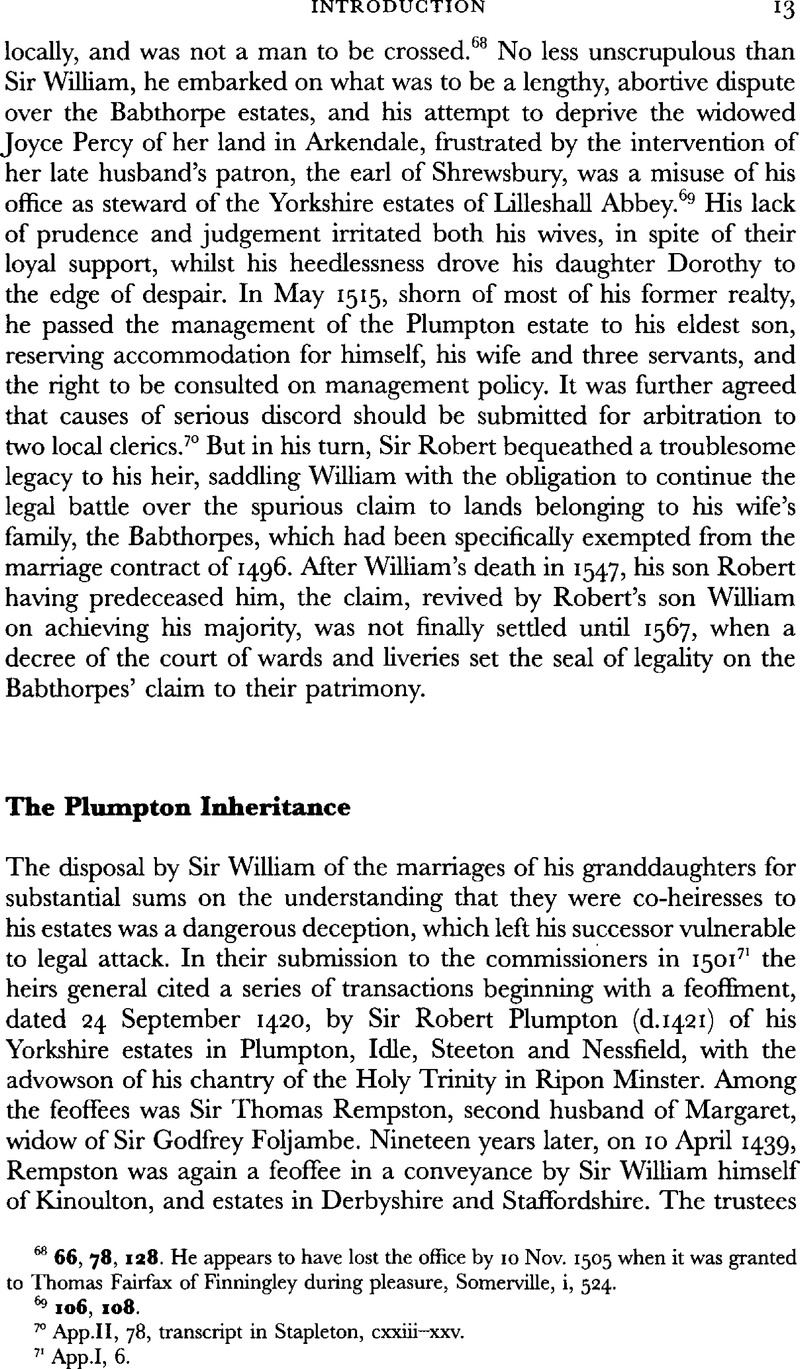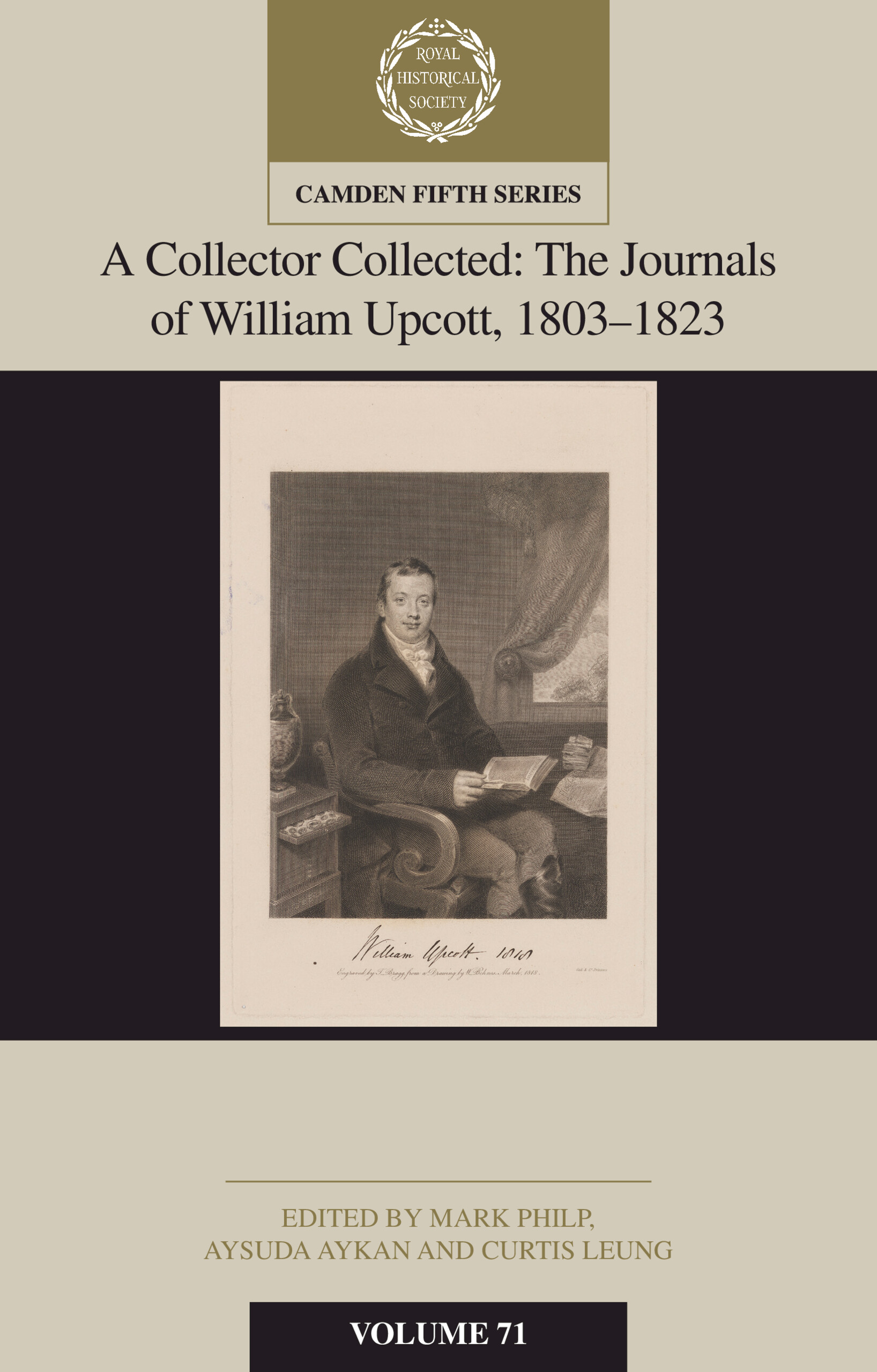Article contents
The Plumpton Inheritance
Published online by Cambridge University Press: 13 October 2009
Abstract

- Type
- Introduction
- Information
- Copyright
- Copyright © Royal Historical Society 1996
References
71 App.I, 6.
72 App.II, 6, 8, 9; 219n.
73 App.II, 13–15.
74 App.I, 2, 6.
75 120; App.II, 28, 29.
76 Acheson, E., A Gentry Community: Leicestershire in the Fifteenth Century C1422–C1485 (Cambridge, 1992), 85; App. II, 35, 36. Much of the argument centred on the question whether the estates were entailed to the heir male, 152.CrossRefGoogle Scholar
77 App.II, 45.
78 How Empson was able to defy the terms of Richard III's settlement is not clear; there was remedy to be had in chancery against such transgressions, e.g. Early Chancery Proceedings, iv (Lists and Indexes, xxix), 373.Google Scholar
79 App.II, 64. On the question of Sir Robert's legitimacy it appears that not until 1472, when he witnessed an enfeoffment, did he act as heir apparent. On 30 May 1530 a jury was summoned to pronounce on the matter, and consequentially on his son's fitness to present a clerk to the chantry in cathedral, Ripon, Yorkshire County Magazine, i (1891), 272Google Scholar; CB, 857.
- 1
- Cited by


